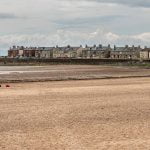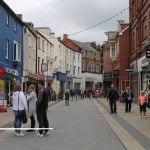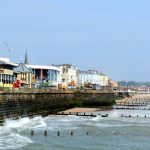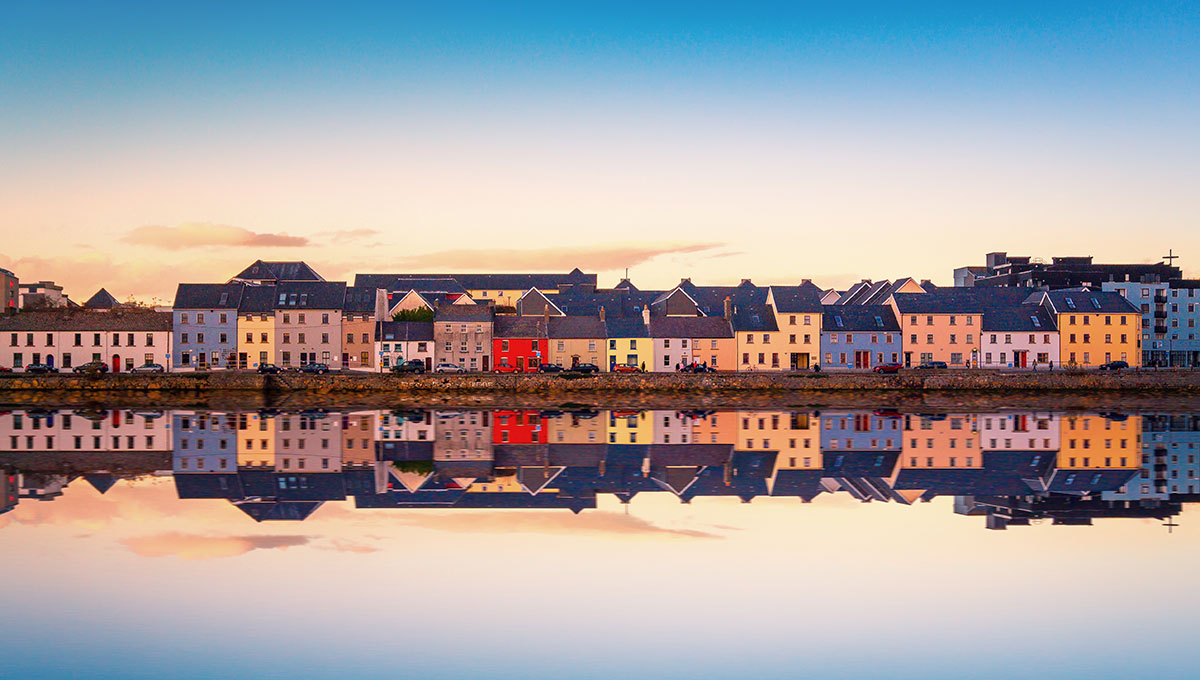
Galway The Five Minute Overview
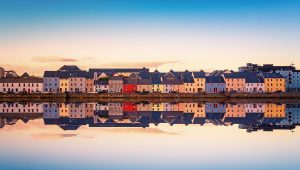
Image: Evgeni-Fabisuk/Shutterstock.com
Gorgeous Galway lies in the County Galway West of Ireland on the River Corrib and this vibrant harbour city is Irelands third largest. This port city is still regarded as the gateway to America and has been for as long as boats have sailed there. For the first-time visitor, it really is like something out of a fairy tale with its multi-coloured seafront houses and amazing land and seascapes. Add to that the vibrant narrow streets and peppering of historic sights and you really have a place to put on your bucket list. It is filled with wonderful friendly folk and just oozes Irish culture. No wonder it is the current (2020) European Capital of Culture.
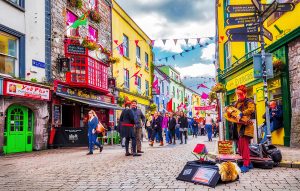
Image: C.Echeveste/Shutterstock.com
We wanted to get up close and personal with Galway, to shake it until all the best bits fall out. Join us for the Five Minute Spare take on this marvellous city and see what we find out.
The Early Days of Galway
Nowadays, this westerly city has a population of around 80,000 people. That’s big for an Irish city – but it hasn’t always been so huge. The city is thought to be named after Dun Gaillimhe, which was the name of a fort built here in 1124. The fort was named for the area of land the town is built in, but before that it’s uncertain. At some point, traders from either the Latin world or the British Isles would have adapted the name to Galway.
The town first appeared in history with the building of the fort but given its highly connected location, it is likely to have been scattered with smaller settlements before then. The town was not officially founded until 1232 when a baron invaded and captured it. The De Burgh family ruled until after the 1500s when the merchants took over. A hundred years later the town walls were erected, extended from the fort in order to try to protect the people who had flocked to it.
The first charter for the city of Galway was issued in 1396 and would have allowed for the paving and cleaning of the streets, and possibly a market. In 1484 it got its first mayor and had an estimated population of around 3,000 residents… already, the amalgamation of small settlements was on its way to becoming an important centre of trade.
The Tribes of Galway
In fact, the city became so wealthy that it attracted a total of 14 merchant families. These families were nicknamed the ‘tribes of Galway’ and would eventually become town leaders. Before the 1500s the city was still in the hands of the Anglicized De Burgh family. This led to tension with their Irish neighbours and, at one point, no native Irish person was allowed inside the walls unsupervised. Specifically, they wanted nothing to do with the ‘O’ or Mac’ clans, so they effectively barred the Scots while they were at it.
The fourteen tribes of Ireland actually ran the city as a successful joint-project that accentuated the benefits of being the closest port to America in all of the west. Not only was it rich in food and money, it was multi-cultural. When Christopher Columbus passed through Galway on his way to Iceland, he remarked that people of ‘extraordinary appearance’ were present. Perhaps it was his first glimpse of the native Americans he would later um… re-home?
The Galway Tribes
These fourteen tribes were:
- Athy family
- Blakes
- Bodkins (it’s a real name!)
- Brownes… with an E
- Darcy
- Deanes
- French
- Font
- The Joyces
- The Kirwans
- The Lynches
- The Martins
- The Morris family
- And the Skerretts
That’s quite a tribal gathering.
Galway stayed quite loyal to the English crown through the years, probably because the tribe’s wise leaders knew the trade advantages it brought to keep them sweet. Nevertheless, they remained independent, even if they did adopt some of their mannerisms.
In 1473 and 1500 two major fires ripped through town. This both left some poverty-stricken and homeless and encouraged residents to build things in stone. It was more work, but it was worth it if your house didn’t go up in flames. The first church in town is recorded as the Church of St. Nicholas, circa 1320. The grey monks also came to Galway in 1296 and built a friary which Henry the VIII would have later redacted. In 1493 one of the Lynch family was found guilty of murder and was hanged by his own father. We’re not sure where but we’d advise you to keep an eye out for an angry ghost.
Let’s take a historical breather and browse some more light-hearted material for a moment. We bet there are more famous people from Galway than you realise…
Famous People from Galway
Some of the Five Minutes Spare favourite famous people out of Galway might surprise you. They might not, but there’s always a small chance you haven’t heard it before, right?
- Padraic o’ Conaire – the Irish Language author, is from Galway.
- Pauline McLynn – Mrs Doyle, from Father Ted and one of the world’s best actresses, is from Galway.
- Dolores Keane, the musician, and Irish folk singer was born and bred here.
- Pat Gibson – one of the very few people to win a million on Who Wants To Be A Millionaire?
- The fiddler Mickey Finn is a Galway man.
- Hollywood actor from the silver screen years Peter O’ Toole was born in Galway and he holds the world record for the number of Oscar nominations without winning.
There are a whole lot more. Galway, it seems, has been offering us famous faces since before anyone thought to write them down. It’s pretty old… and we still have a lot of that history to cover.
17th Century Galway
In the 1500s and the 1600s, Galway started to make significant improvements under the tribal alliance. The streets were paved, and the jurisdiction of the merchants was extended to include Aran Island. More charters followed, giving them permission to build well and ensure the longevity of the harbour area. A hospital came in 1543 in response to sweating sickness, and Galway would have suffered from the plague around the 14th century, too. The Lynch family completed their manor house in 1600 but not much of it is left today. James I gave Galway another charter rather than having to invade them, it secured the land around the city for extra space. A plague in 1649 nearly took everyone out but they rebuilt.
By the 17th century this agreement with the English was wearing thin. In 1652 the English Civil War over spilled into Ireland and Galway felt the brunt of it. They were besieged for a whole year before they surrendered to the English army. They then had to go through the damages caused by the Williamite War, then another siege just after the Battle of Aughrim. The merchant families’ reign ended around this time, but the city didn’t stop suffering just yet. The Great Hunger hit in the 1840’s leaving thousands starving and leading to mass emigration to America[i]. If none of these things had happened, Galway would be a lot larger than it is today.
The 19th Century and Modern Day Galway
The potato famine caused the population to drop sharply. Whereas the population at the start of the 1800s was over 5,000, by the end of the year it was much less. It is estimated that around 20% of the population left or died as a result. Galway Courthouse was erected in 1812, in 1818 the Salmon Weir bridge was built, and the railway came in 1850, providing mild relief and food supplies. When Galway entered the 1900s it did so in the harshest of circumstances. It was a desolate place where many shops and homes were abandoned.
The population grew slowly and has continued to do so in the last hundred years or so. It had 21,000 residents by 1950, despite having sent volunteers to both World Wars. It was a busy port although the old trades such as textiles and wine had died down a bit. Farm produce from the nearby fertile valleys and iron smelting were common. Hat making was also popular, so there is a high chance that at least some of the Galway population were mad.
The residents of Galway didn’t escape the ill effects of the Easter Rising. Just after WWI broke out, the Germans sent some 20,000 rifles to Ireland, in the hope that they could encourage them to rise up against English rule. A mand named Liam Mellows encourages the separatists of Galway to rise up against the local authorities. There were several clashes in Galway, and in the county, between the police and the separatists, as a result. Two separate groups unified here and scrapped with ‘peelers’ all through the 1916. They did sizable amounts of damage and you can read the full account of it all, here.
More Modern Times
As these old industries have died out and evolved, they have been replaced with IT, electronics, computers, and communication centres. The port still runs but air mail has all but replaced the transatlantic journeys of yesteryear. In 1967 a Roman Catholic Cathedral was built, followed not long after by a visit in ’63 from President Kennedy! They named a park after him that you can visit today if you want to. In 1977 the City Museum was built, and several shopping centres were erected to help shore up the economic gap and turn the town into a popular shopping destination. In 1991 a shopping centre was added and, since it was built, they have kept adding to it.
In recent years, while everyone else has been suffering from double and triple recessions, Galway has been going under a socio-economic boom. It just keeps getting bigger…much like Dublin. The population has skyrocketed because of the success the city has had in other areas of the economy. It seems that they got investment from just the right firms, at just the right time. The port puts them in a unique place in terms of the type of people that live there… the type of people that stay in Galway are the same type of people who have enough money to own boats… at least some of them anyway.
If that’s you, then kudos. We’re jealous. We wish we owned a boat, then we’d be off to all the stunning locations we write about every day, here at Five Minutes Spare.
Let’s round up the history bit by saying that Galway is an exceptional place. It has risen time and time again, coming through sieges, fires, and loss of entire industries, only to land on its feet like a cat with 9 lives left. Good on you Galway… Please never change.
Let’s go over some of the fun things about Galway that you probably didn’t already know.
Fun Facts About Galway!
So what has gone on in these parts that is abnormal, out of the ordinary, or downright exciting? Don’t worry, we found out on your behalf:
- Galloway is home to Muckanaghederdauhaulia – which is a real place – and means the ‘piggery between two briny places’, which is pretty specific.
- The Claddah ring design is Galway in origin. Around the world people still wear it, the two hands supporting a love heart that wears a crown has a dual meaning. When in love, it is worn face in, when single, face out… or perhaps the opposite…
- When Columbus visited in 1477 it is believed he attended St. Nicholas Collegiate Church – which is still in operation to this day.
- The idea that someone could be ‘lynched’ almost certainly started in Galway. It was as a result of James Lynch Fitzstephens, the mayor who had his son hanged for murdering a local woman.
- Nobody wanted to execute Charles I after Cromwell ordered his execution. In the end, two soldiers from Galway were sent to London to perform the grizzly task.
- The cannons you can still view on Eyre Square were captured from Russia during the Crimean war. They were briefly removed in the 1860’s because the local government were worried the Catholics might use them to attack.
- There was once a gaol here, but it is estimated that the Cathedral was built on top of its ruins.
Wow… there are so many interesting points about this town it is quite a revelation to read about it all. Galway was one of the worst counties affected by the Great Famine, has contributed to countless wars, and has produced some famous Hollywood talent. It’s an incredible place.
Galway Attractions
There are hundreds of things to do in Galway for those that are spending time there. Whether you are in the area on holiday or whether you plan to stick around, here are some of our favourite things to do in Galway, carefully curated for your enjoyment!
Historic Sights and Landmarks
You should start any good visit to Galway by checking out the Latin Quarter. This area of the city is renowned as being the most beautiful, and is filled with old buildings, antique shops, and boutique restaurants.
Galway Bay is another landmark location you ought to peruse. From here you are a hop and a skip from the port, beaches, and seafront, and you can see to Connacht and the Burren. Walk the shores, enjoy the scenery, try not to let a seagull steal your chips.
Also on the list of historic sights and landmark locations in Galway is the Cathedral. This is the same one built all those years ago, that is still in use today. You can take in a service or just use the stunning backdrop to take some good photos.
Museums and Galleries
The most notable museum in town is the Galway City Museum. This is where you go to learn all about the history of Galway, or about the fourteen families that ran it for so long. It also comes with its own art gallery attached. Another interesting sight to see that is vaguely reminiscent of a museum is the Rathbaun Farm. It seeks to provide an authentic Irish farming family experience, complete with sheep and sheepdogs.
Outdoor Attractions
There is a whole array of great parks in and around the city of Galway. Just outside of the city itself you will find the Connemara National Park and Visitor Centre. This place is rated as the top attraction in the whole city on Trip Advisor, so it’s going to be worth the journey. The park spans 2,000 hectares of mountains, hills, forests, meadows, and bogs. It’s home to so many species we lost count.
While we are on the topic of amazing things to do as voted for reviewers, let’s not neglect the Wild Atlantic Way. The series of jagged coastline outside of the port is spectacular and you could spend years exploring it all. You might even be able to land a guided tour or a trip out in a boat.
We also have to advise you to visit Salthill Promenade and stroll along the cobbled bay. It’s gorgeous. It’s the perfect “I like holding hands and romantic walks” kind of place.
Sports and Recreation
Believe it or not, Hurling is a big sport here among the older population Check out Galway footballers on Facebook. There is a rich history in horse racing and Gaelic games, too. In fact, the Galway Races are known throughout the world and facilitate some of the most famous jockeys (and horses) in Ireland.
Galway is home to Connacht Rugby team which are one of the four professional Irish rugby teams. They train hard to compete in the European Champions Cup. It is also home to Galwegians RFC, which is a team for the city.
As for football, you can catch up with local team Galway United, who play in the League of Ireland Premier Division.
There are so many teams it is sheer madness. Some of them are Gaelic, some not. Football is huge in Galway.
Shopping and Retail
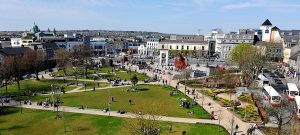
Eyre Square where shopping meets park life!
Image: NujMan/Shutterstock.com
In a weird twist, Eyre Square is one of the biggest parks in town while simultaneously housing the best shopping centre. Opened in 1991, the Eyre Square shopping mall just keeps getting bigger. Shop till you drop then picnic in the park… it’s a weird place. You should also consider Quay Street for a night out. Drinking and dining, as well as sightseeing and shopping, are some of the things that go on here.
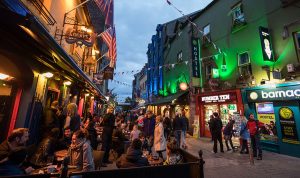
Quay Street Galway At Night Image:gabriel12/Shutterstock.com
Other Notable Galway Sights
That’s not all there is to do in Galway – not by a long shot. Here are some of the other things we wanted to cover, but couldn’t quite fit in:
- The ferries run from here to Aran Island. You can spot them with the little ones or take a day trip.
- Rinville Park is a lovely open space to pass an afternoon and let the kids blow off steam.
- The Galway Market is an outdoor affair that may or may not be successful; depends on the weather that Saturday.
- Salthill Beaches, lying off the promenade, are definitely worth checking out!
You will always find something that suits you in Galway. There’s just too much to see and do for it to be otherwise!
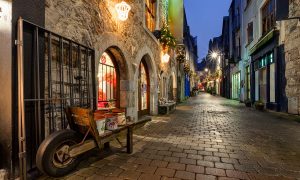
Image:Rihardzz/shutterstock.com
How to Get There?
Now you know everything we know about Galway in Ireland – except how you go about getting there. No matter! As usual, Five Minutes Spare have you covered.
By Road
If you follow the M4 straight to the west out of Dublin, then go straight on to the M6, you will hit Galway. Make sure you don’t get trapped on the bypass.
By Rail
Galway Station is the one you are looking for; it is also labelled Ceannt for all you Irish speakers.
By Air
Shannon Airport is only an hour away by car.
By Sea
Aim for the Port or Harbour at Galway, please don’t get lost at sea.
Got Five Minutes?
And that brings us to the end of our tirade about Galway. We are suitably impressed by this Irish city and we hope you are, too. Should you wish to read about other places, plan your next staycation, or work out a city itinerary for anywhere you might be passing through – then we would be delighted to help. Head on over to the Five Minutes Spare Travel pages and have a browse. We’re fairly confident that we have something for everyone.
[i] https://en.wikipedia.org/wiki/Galway
